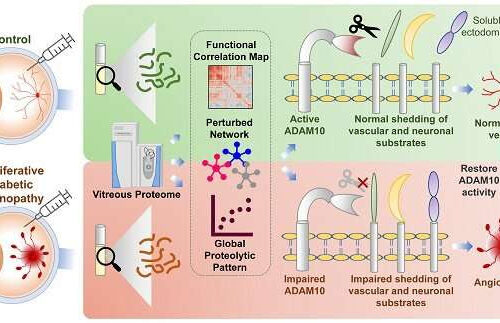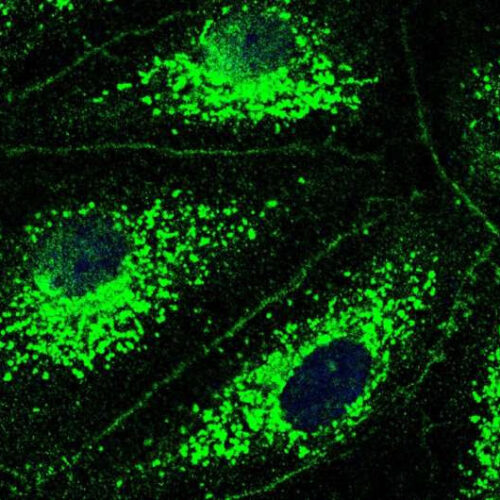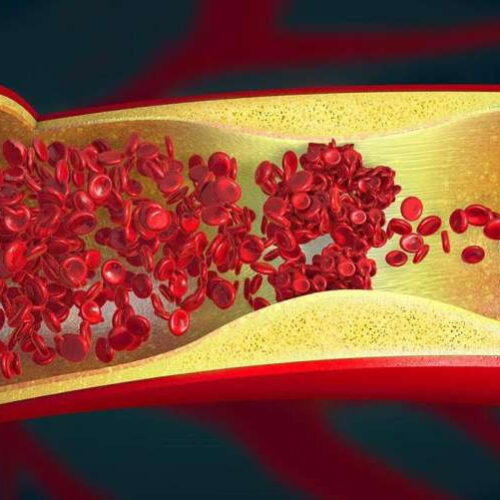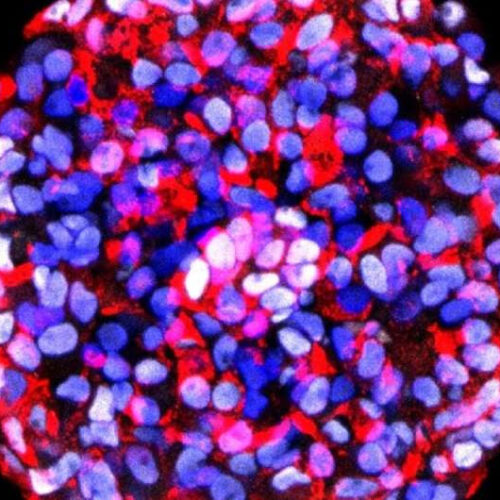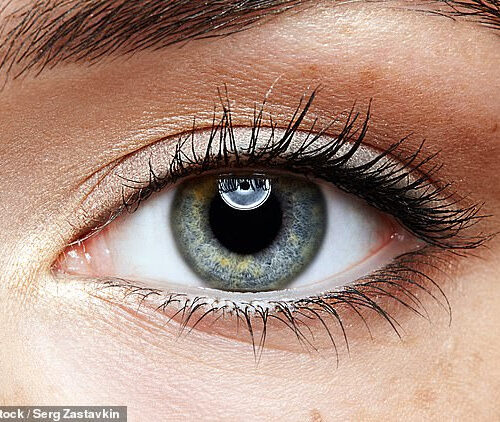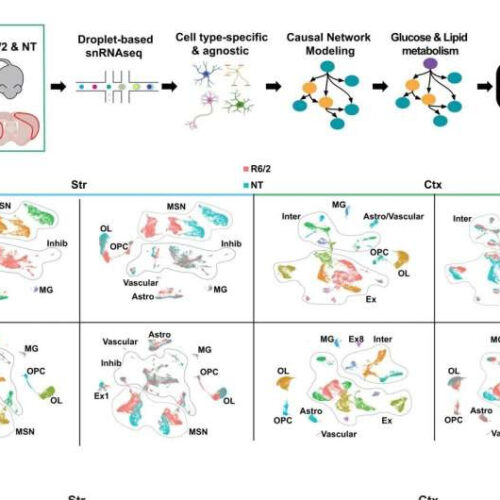by Michael Mathai, The Conversation Like the slogan on the bottle says: ‘I put Sriracha on my Sriracha’. Credit: Unsplash/Hiroko Nishimura, CC BY The news of a hot chili sauce shortages earlier this year—due to high temperatures and drought in agricultural regions—prompted warnings to stock up on supplies or forego adding this flavor to your food. But what prompts...
Pulmonary arterial hypertension is incurable but animal model study suggests an experimental drug may be effective
by Delthia Ricks, Medical Xpress TCS2 protein reduction in SMA-positive areas in small PAs from SM22-Tsc+/- mice. a: SM22-Cre mice were bred with Tsc2flox/flox mice to generate SM22-Tsc+/- mice. b: Immunohistochemical analysis of lung tissue sections of SM22-Tsc2+/- mice to detect TSC2 (red), smooth muscle α-actin (SMA) (green), and DAPI (blue). Representative images from n=5 WT and 7 SM22-Tsc2+/- mice...
Study discovers novel therapeutic target to advance the treatment of diabetic eye diseases
by Agency for Science, Technology and Research (A*STAR), Singapore Graphical abstract. Credit: Theranostics (2022). DOI: 10.7150/thno.72947A recent study discovered a novel therapeutic target named ADAM10 that could be used to treat patients with Diabetic Retinopathy (DR), a condition that leads to blindness induced by prolonged diabetes. Abnormal blood vessel formation in the eyes of diabetic patients is...
Research shows fatty liver disease endangers brain health
by King’s College London Credit: Pixabay/CC0 Public Domain In a study examining the link between non-alcoholic fatty liver disease (NAFLD) and brain dysfunction, scientists at the Roger Williams Institute of Hepatology, affiliated to King’s College London and the University of Lausanne, found an accumulation of fat in the liver causes a decrease in oxygen to...
Cystic fibrosis drug could help treat pneumonia
by Charité – Universitätsmedizin Berlin Fluorescence microscope image of cells in the lung’s blood vessels. The study has shown for the first time that these cells possess a CFTR chloride channel (green), and that lung inflammation-induced loss of this channel results in increased permeability of pulmonary vessels. Cell nuclei appear as round dark spots, and cell...
Transdifferentiation: Going straight to the source of vascular disease
by University of Tsukuba Credit: Christoph Burgstedt/Shutterstock Vascular diseases such as atherosclerosis, pulmonary hypertension, and cardiac fibrosis are associated with a reorganization of the structure of blood vessels. Researchers led by the University of Tsukuba have demonstrated transdifferentiation, an important process by which this reorganization occurs that holds promise for future treatments for vascular diseases. Blood vessels are...
Team identifies new pathogenic mechanism for diabetes onset in MODY3
by Helmholtz Association of German Research Centres Stem cell–derived beta cell cluster. Credit: Chenglei Tian & Henrik Semb In order to treat patients with diabetes in the best possible way it is necessary to understand the disease mechanism. MODY type 3 (MODY3) is a monogenic hereditary form of diabetes that is caused by a genetic defect in the...
Scientists have a theory on covid loss of smell: Damage to nasal cells
By Kelsey Ables; December 22, 2022 at 5:45 a.m. EST Persistent loss of smell has left some covid-19 survivors yearning for the scent of their freshly bathed child or a waft of their once-favorite meal. It’s left others inured to the stink of garbage and accidentally drinking spoiled milk. “Anosmia,” as experts call it, is one...
Scientists produce eye tissue using 3D printing and stem cells – their work could lead to breakthrough treatments for age-related macular degeneration that impacts 20M Americans
By CHRISTOPHER CARBONE, U.S. SCIENCE AND TECHNOLOGY EDITOR FOR DAILYMAIL.COM Scientists have figured out a way to create eye tissue using stem cells and 3D printing – in new research that could lead to breakthroughs in treating a range of degenerative eye diseases. A team of researchers from the National Eye Institute (NEI), part of the National Institutes of...
Study links metabolism changes in certain brain cells to Huntington’s disease
by Pat Harriman, University of California, Irvine Single nucleus RNAseq of mouse and human R6/2 and HD samples. a Illustration of workflow used for this study. After frozen tissue is microdissected from the Cingulate, Caudate, and nucleus Accumbens from 66 samples from 29 human donors (3 grade I, 4 grade II, 4 grade III, 3 grade IV, 5...



